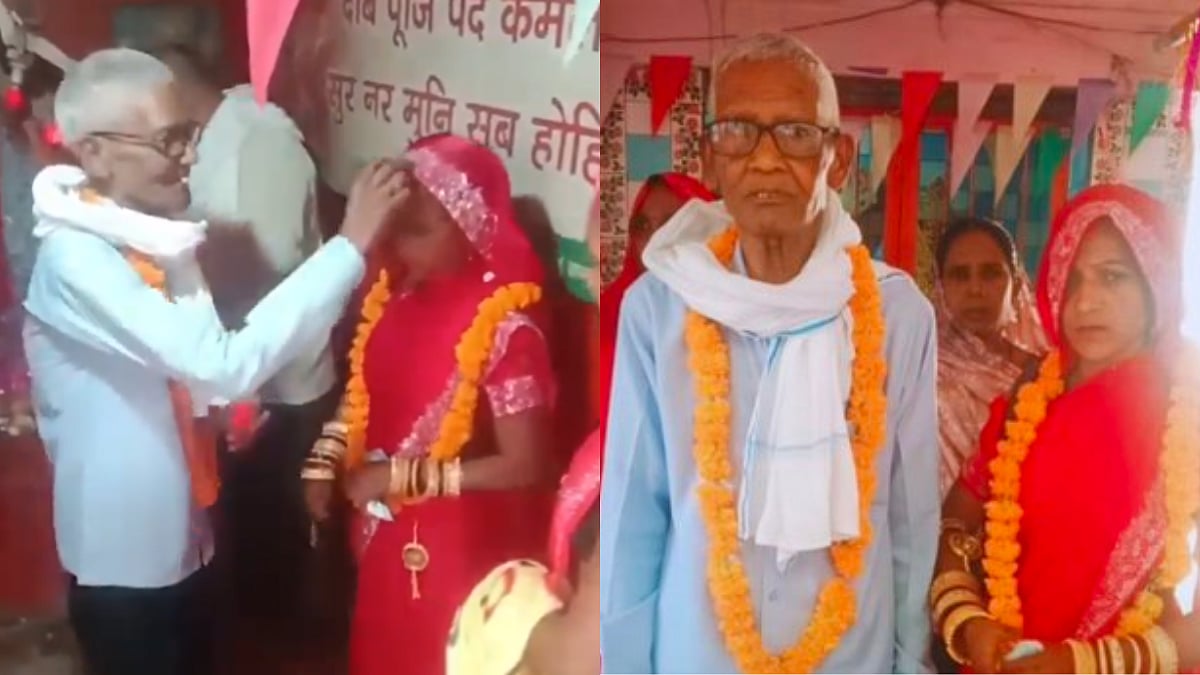Watch the recently released Hindi blockbuster Sooryavanshi, and you can’t help but notice the screenwriters take as many if not more somersaults than protagonist Akshay Kumar, whose roles have stunts and daredevilry to make up for his well-known lack of acting chops. Yet none of these somersaults — some of which could put even the most seasoned trapeze artiste to shame — take away from the relentless dog-whistling of hate and suspicion for the Muslim community through the film’s 145-minute run.
Director Rohit Shetty denies both — that the film milks the climate of Muslim-hate spread by the ruling politicians and that it uses the police uniform to paint past events like Partition in a communal colour and sandpapers it with OTT jingoism. “When my villain was a Hindu conman Jaikant Shikre (Prakash Raj) in Singham, a Hindu Godman Satyaraj Chandar aka Babaji (Amole Gupte) in Singham Returns, Durva Yashwant Ranade (Sonu Sood) in Simmba no one raised questions on why they belonged to a certain community, but now there is a problem?” he has told the media and added, “Films get made for the box office and one is only trying to make a successful film. In Sooryavanshi, the plot revolves around the chase between cops and terrorists planning a massive RDX attack on Mumbai. All the main villains in Sooryavanshi are shown to have crossed the border from Pakistan and are staying in India. What religion would they be expected to be from? I only try and make films that will work commercially but I’m not forcing people to go watch them. There will always be a small segment of people who will hate my genre of films. I’m not catering to them. I cater only to my audience.”
But Sooryavanshi is not an isolated case. Many filmmakers from an industry that once revelled in portraying the Muslim as royalty, shayars, and artists are now only willing to make the community members depicted as terror masterminds, ganglords, pimps, thieves, ruffians, traffickers and now quislings who help the enemy country (never China, always Pakistan and always working for the ISI) in its efforts to destabilise India. Look at Bhuj: The Pride of India (which rants about ittar-wearing Mughal outsiders); The Empire (which makes Babar as the villain of the piece for all the wrongs ever perpetuated in this land); or Bard of Blood (the good Muslim — Sadiq Sheikh is an alcoholic and the bad Muslim — Mullah Khalid — is a paedophile). Film after film plays to the gallery and builds on the otherising stereotype of the Muslim.
When they are not being vilified, Muslim characters are made to apologise for themselves or even end up taking inordinate risks or face death to prove their loyalty to India like in Raazi (2018), War (2019), or Romeo Akbar Walter (2019). Faced with such a situation, a Muslim character cannot have the right to say ‘no’ without his loyalties being questioned.
Veteran filmmaker Shyam Benegal, who has given us the brilliant Mammo (which won the National Award for best film in 1995), notes that some of the content being churned out today is deeply problematic. “But the fault lies equally if not more with audiences, which unquestioningly lap up such content by supporting it at the box office. Without their support such content will not find as many makers,” he says, and explains, “Let’s remember that most filmmakers are only trying to tell a story… not great serious thinkers. They may be inspired by all that’s going on around and from their own or others’ observations of life, experiences, or imagination. But let us not forget that they essentially want to entertain and rely largely on intuition and instinct. Any insights on life or the world around are largely incidental.” Benegal, however, is not absolving the filmmaker of responsibility to society.

Nor is documentary filmmaker and Film and Media Studies academic Anjali Monteiro. She says, “Filmmakers can’t abdicate their responsibility by using the box office as a ruse. This is especially true of a country like India where cinema is still such an important means of mass communication, awareness and entertainment.”
Right from the 1930s through the ’60s, Indian cinema has presented sensitive issues ranging from freedom of expression to unemployment, from dowry to gender equality, poverty, exploitation, and so on, says Monteiro. She also notes the occasional stereotype popped up then too. From the black and white era to the ’60s, characters who were Christian spoke funny Hindi, drank a lot, and were foolish sidekicks (Robert) to the villain; and Christian women wore skimpy western outfits, were little more than the gangster’s moll (Mona Darling) of easy virtue. Parsis were good-natured henpecked simpletons with buck teeth or funny moustaches, and Muslims had to be devout, wearing both their patriotism and/or altruistic sacrificing streak on their sleeve along with abundant facial hair.
“Yet they (filmmakers) were never so malevolent and did not go to such extremes to create hate and division,” laments Monteiro, who points out, “All that changed with the ’90s as mandir politics took centre stage.”
Ira Bhaskar, who has co-authored Islamicate Cultures of Bombay Cinema, a book co-written with Richard Allen about the cinematic representation of Muslims, agrees that the rise of Hindutva politics has coincided with the rise of bigotry in portrayal of Muslims by mainstream cinema.
“Through the 1930s, Muslim monarchs were depicted as rulers who stood for a diverse India’s capability of taking everyone along, of patronage for the arts and as a way of telling the British that we had an ingenious form of governance predating them,” says Bhaskar who cites the example of movies like Pukar, Anarkali and Mughal-e-Azam.
“Since India’s wounds of Partition were so fresh, there was an unwritten rule in the film industry on avoiding the depiction of Hindu-Muslim conflicts, and the Muslim was always a good Muslim,” says this Professor of Cinema Studies at JNU.

A still from Mammo |
Later the movies became less about the royals and more about the average Muslim, bringing to the fore an entirely new genre — the Muslim social. In the beginning, this included films about the landed aristocracy and the culture of the Awadhi nawabs. These lavish productions were marked by exceptional music, sophisticated Urdu and depiction of a rich (even decadent!) lifestyle with courtesans and drinking soirees. Iconic films like Mirza Ghalib (1954), Chaudhvin Ka Chand (1960), Mere Mehboob (1963), Dil Hi To Hai (1963), Bahu Begum (1967), Mehboob Ki Mehndi (1971), Pakeezah (1972) and Umrao Jaan (1981) from this genre still have great recall value.
“As development indices — literacy, health, infant mortality rate, maternal mortality rate — began falling, the life and lifestyle of the average Muslim was changing. This found reflection in films like Dastak (1970), Garm Hava (1973), Bazaar (1982), Nikaah (1982), Anjuman (1986), Salim Langde Pe Mat Ro (1989) and Naseem (1995),” points out Bhaskar.
According to her, while filmmakers in several Muslim-majority countries began making films based on this template in their own settings, in India it seemed like the genre had run its course. “The genre seemed to make a comeback with Mammo (1994), Sardari Begum (1996), Fiza (2000) and Zubeidaa (2001), but it was short-lived.”
By the late 1980s, post-Tezaab, the unwritten rule — of keeping the Muslim character good — was given a quiet burial. Criminals, gangsters, and even terrorists were increasingly shown as obvious Muslims with skull cap, beards, kohl-lined eyes and offering namaz.

A still from Padmaavat |
Since 2017, in costume dramas masquerading as “historicals”, Muslims have been increasingly demonised even as Hindu (largely Rajput) kings have been glorified. “It is like Hindu supremacism is using cinema to drive the final nail in the coffin of the idea of secular India. Suddenly the vicious communal call for the blood of the other community which would once have caused shock and dismay even at the fringe has become mainstream, even taking on a celebratory tone,” says Bhaskar, citing the instance of films like Padmaavat (2018). “Look at the contrast between Sanjay Leela Bhansali’s Bajirao Mastani (2015) and Padmaavat. There, though there were attendant problems with the Brahminical culture being celebrated, Bajirao takes on his whole family and community to defend Mastani, even paying for it with his life.”
But both Monteiro and Bhaskar point out how the communalisation was also sought to be countered by some filmmakers who saw the attendant dangers. They cite the example of films like Mani Ratnam’s Bombay (1995), which tells the story of an inter-religious family in the run-up to and during the 1992-93 Bombay riots, which erupted after the demolition of the Babri Masjid, leading to inter-community tension. Ratnam whose house was bombed after the film was made, has himself described it as “a positive film about communal harmony”. He said years back in an interview, “The Bombay riots were not the main focus of the film, but a helpless, innocent man caught up in violence, not of his own making.”
In the film, caught between Hindu mobs asking him to join them because he is a born Hindu and the Muslim mobs asking him to join them because he is married to a Muslim, Shekhar (Arvind Swami) folds his hands to say he is neither, only an Indian.
“Films like that, and Zakhm (1998) Hey Ram (2000), Dharm (2007), Shahid (2013), Mulk (2018), Gully Boy (2019), Nakkash (2019) are signs of the ongoing churn to reclaim the secular roots of the idea of India that cinema once stood for,” says Bhaskar.







